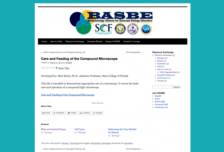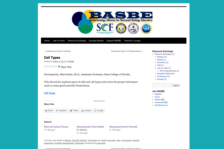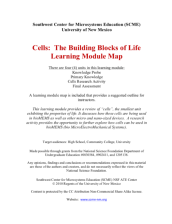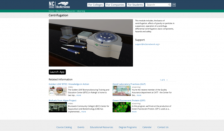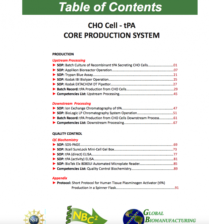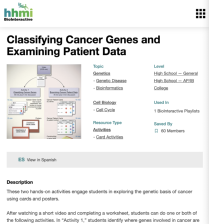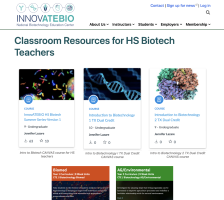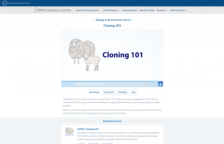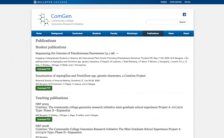Browse Resources
Resources |
|---|
This lab activity from the Biotechnology Alliance for Suncoast Biology Educators (BABSE) is intended to demonstrate appropriate use of a microscope. It covers the basic care and operation of a compound light microscope. The lesson includes information on how a compound microscope works, a diagram of...
This lab activity from the Biotechnology Alliance for Suncoast Biology Educators (BASBE) explores parts of cells and cell types and covers the proper techniques used to create good scientific illustrations. The lesson includes background information on scientific drawing and basic cell structure,...
Module Description:
This learning module from the Support Center for Microsystems Education introduces students to the different types of cells, aspects of cell growth, and the types of organelles found within cells. The material focuses on cells in relation to bioMEMS (bio- microelectromechanical...
The North Carolina Community College System BioNetwork's interactive eLearning tools (IETs) are reusable chunks of training that can be deployed in a variety of courses or training programs. IETs are designed to enhance, not replace hands-on training. Learners are able to enter a hands-on lab...
The Northeast Biomanufacturing Center and Collaborative (NBC2) has created this laboratory manual for using recombinant cells to make proteins-of-interests. This manual focuses on tissue Plasminogen Activator (tPA) secreting Chinese Hamster Ovary (CHO) cells. The accompanying zip file contains the...
This lab activity from the Biotechnology Alliance for Suncoast Biology Educators (BASBE) covers background information on the basic types of chromatography and has the student separate pigments extracted from pens and plant leaves using paper chromatography. The lesson includes the materials needed...
This web page from HHMI BioInteractive provides two activities to engage students in "exploring the genetic basis of cancer using cards and posters." In the first activity, a set of 139 cards and associated posters help students locate genes on human chromosomes. In the second activity, students...
These five biotechnology courses, provided by InnovATEBIO, are designed to introduce biotechnology concepts at upper high school, technical, and lower undergraduate levels. Each course features a variety of modules and sub-modules that include quizzes, labs, worksheets, presentations, and other...
This animation from Cold Spring Harbor Laboratory's Dolan DNA Learning Center presents the cloning process. Visitors can view the scientific history of cloning using embryonic and G0 state cells and the various procedures used by scientists to clone animals. Watch as the process for creating Dolly...
This webpage includes student and teaching publications from ComGen:Community College Genomics Research Initiative at Bellevue College. Publications include Sequencing the Genome of Pseudomonas fluorescens L5.1-96:-, Examination of Aspergillus and Penicillium spp. genetic character; The community...
|
| ← PreviousNext → |
